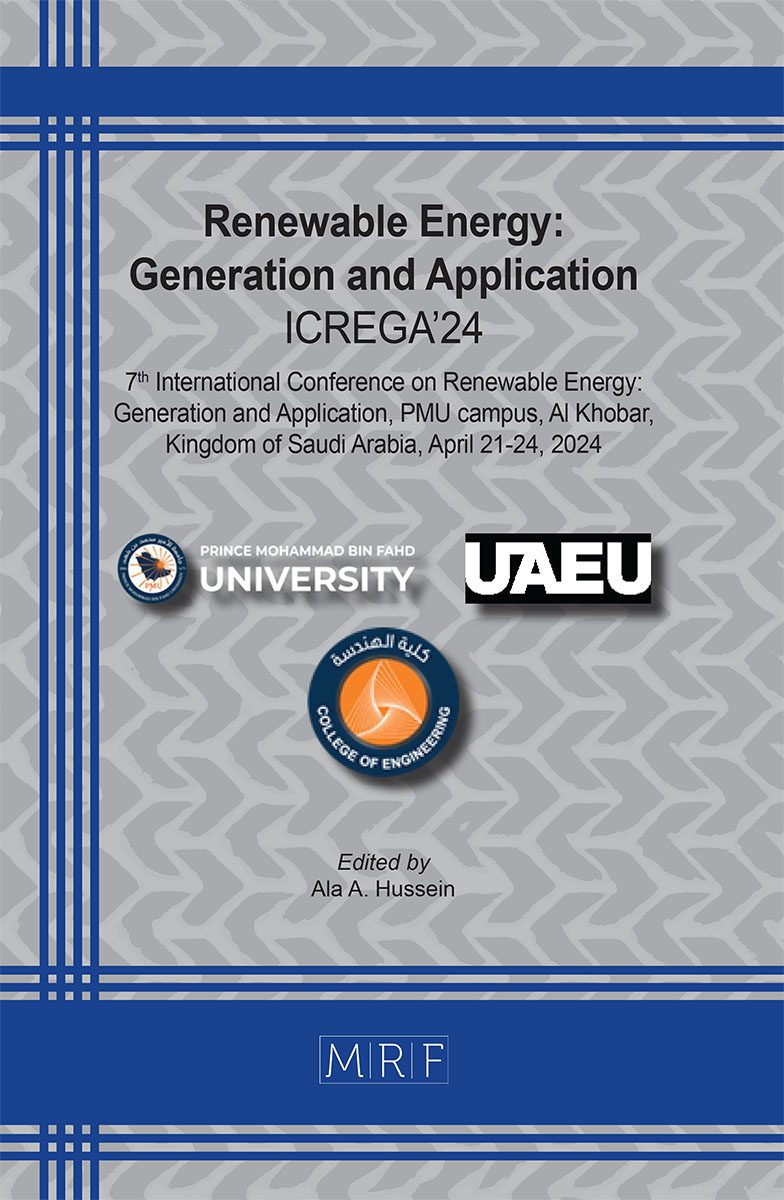–
Power systems stability of high penetration of renewable energy generations
Ahmad HARB, Hamza NAWAFLEH
download PDFAbstract. In this Paper a comprehensive analysis of the Jordanian Power Grid (JPG)’s stability under various practical scenarios, including load disturbances and the integration of Renewable Energy Sources (RES). A key focus of the study is the impact of RES on the stability of the JPG, especially during unexpected disturbances. The findings reveal a notable trend: higher RES integration tends to decrease the grid’s stability under certain conditions. Additionally, the report explores the effects of interconnecting the JPG with neighboring countries, such as Egypt. This connection is shown to potentially enhance the JPG’s stability, both with and without the involvement of RES. The report delves into numerous cases, providing detailed discussions and insights. The conclusions drawn emphasize the critical importance of carefully managing the proportion of RES in the JPG to maintain its stability against various disturbances. This study offers valuable recommendations for future strategies to ensure the robustness and reliability of the Jordanian Power Grid in the face of evolving energy landscapes.
Keywords
Power Systems Stability, Renewable Energy, Impacts of Renewable Energy on Power Systems
Published online 7/15/2024, 6 pages
Copyright © 2024 by the author(s)
Published under license by Materials Research Forum LLC., Millersville PA, USA
Citation: Ahmad HARB, Hamza NAWAFLEH, Power systems stability of high penetration of renewable energy generations, Materials Research Proceedings, Vol. 43, pp 112-117, 2024
DOI: https://doi.org/10.21741/9781644903216-15
The article was published as article 15 of the book Renewable Energy: Generation and Application
![]() Content from this work may be used under the terms of the Creative Commons Attribution 3.0 license. Any further distribution of this work must maintain attribution to the author(s) and the title of the work, journal citation and DOI.
Content from this work may be used under the terms of the Creative Commons Attribution 3.0 license. Any further distribution of this work must maintain attribution to the author(s) and the title of the work, journal citation and DOI.
References
[1] H. Alnawafah and A. Harb, “Modeling and Control for Hybrid Renewable Energy System in Smart Grid Scenario – A Case Study Part of Jordan Grid,” in 2021 12th International Renewable Energy Congress (IREC), 2021, pp. 1–6. https://doi.org/10.1109/IREC52758.2021.9624739
[2] L. Xiong, X. Liu, D. Zhang, and Y. Liu, “Rapid Power Compensation Based Frequency Response Strategy for Low Inertia Power Systems,” IEEE J Emerg Sel Top Power Electron, vol. 6777, no. c, pp. 1–1, 2020. https://doi.org/10.1109/jestpe.2020.3032063
[3] L. Xiong, X. Liu, D. Zhang, and Y. Liu, “Rapid Power Compensation-Based Frequency Response Strategy for Low-Inertia Power Systems,” IEEE J Emerg Sel Top Power Electron, vol. 9, no. 4, pp. 4500–4513, Aug. 2021. https://doi.org/10.1109/JESTPE.2020.3032063
[4] M. Alkasrawi, E. Abdelsalam, H. Alnawafah, F. Almomani, M. Tawalbeh, and A. Mousa, “Integration of solar chimney power plant with photovoltaic for co-cooling, power production, and water desalination,” Processes, vol. 9, no. 12, 2021. https://doi.org/10.3390/pr9122155
[5] B. Kroposki et al., “Achieving a 100% Renewable Grid: Operating Electric Power Systems with Extremely High Levels of Variable Renewable Energy,” IEEE Power and Energy Magazine, vol. 15, no. 2, pp. 61–73, Mar. 2017. https://doi.org/10.1109/MPE.2016.2637122
[6] M. Velasco, P. Marti, J. Torres-Martinez, J. Miret, and M. Castilla, “On the optimal reactive power control for grid-connected photovoltaic distributed generation systems,” in IECON 2015 – 41st Annual Conference of the IEEE Industrial Electronics Society, IEEE, Nov. 2015, pp. 003755–003760. https://doi.org/10.1109/IECON.2015.7392686
[7] E. Abdelsalam et al., “Performance analysis of hybrid solar chimney–power plant for power production and seawater desalination: A sustainable approach,” Int J Energy Res, vol. 45, no. 12, pp. 17327–17341, 2021. https://doi.org/10.1002/er.6004
[8] Hamza Alnawafah, “MODELING AND CONTROL FOR HYBRID RENEWABLE ENERGY SYSTEM IN SMART GRID SCENARIO A CASE STUDY PART OF JORDAN GRID,” German Jordanian University, Amman, 2020. Accessed: Sep. 08, 2023. [Online]. Available: https://hip.jopuls.org.jo/c/portal/layout?p_l_id=PUB.1009.1&p_p_id=search_WAR_fusion&p_p_action=1&p_p_state=normal&p_p_mode=view&p_p_col_id=column-1&p_p_col_pos=0&p_p_col_count=2&_search_WAR_fusion_action=navigate&_search_WAR_fusion_navigationData=search%7E%3D1%7E%21BIB%7E%212147483647%7E%217123071
[9] H. Alnawafah, R. Sarrias-Mena, A. Harb, L. M. Fernández-Ramírez, and F. Llorens-Iborra, “Evaluating the inertia of the Jordanian power grid,” Computers and Electrical Engineering, vol. 109, Aug. 2023. https://doi.org/10.1016/j.compeleceng.2023.108748
[10] A. T. M. Abu Dyak, “The Effect of Connecting Large Scale Renewable Project on Power Quality And Voltage Control Of The Jordanian Electrical Grid,” German Jordanian University, Amman, 2017.












